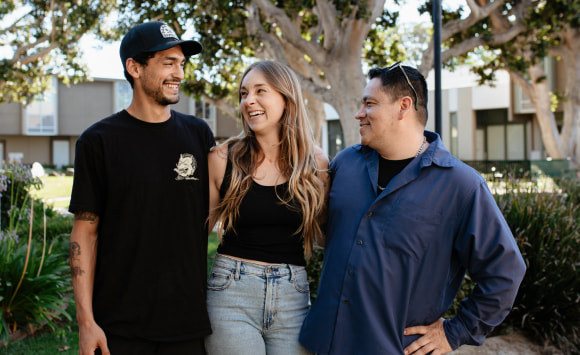The avoidant attachment style is one of the most common yet misunderstood patterns in adult relationships. First known as anxious-avoidant in childhood, this attachment style is one of three insecure types identified by psychologists.
Know how avoidant attachment forms, how it shows up in adult life, and how it can make recovery harder. Most importantly, you’ll learn that with the right kind of support, change can begin.

Common Traits of People with Avoidant Attachment
At first, people with an avoidant attachment style may seem strong, confident, and independent. They often avoid emotional or physical closeness and may struggle with long-term relationships. In the workplace, they’re sometimes seen as “lone wolves” or high achievers who prefer to work alone.
In a study of Italian adults between the ages of 18 and 62, researchers found that people who were single were more likely to show avoidant traits than those in stable relationships. These traits included:
- Discomfort with closeness – They feel uneasy when others get too emotionally close.
- Seeing relationships as less important – They often act like relationships don’t matter much.
- Avoiding emotional connections – They may keep their feelings inside and avoid talking about them.
Even though avoidant people try to seem fine on their own, the study showed that being in a close, healthy relationship helped people feel better emotionally. Singles with avoidant traits didn’t score as high on emotional well-being.
This means that the avoidant attachment style can make life and relationships harder over time.
Understanding these traits is a first step. These patterns can also play a big role in how someone copes with stress or pain, and in some cases, this leads to unhealthy habits, including addiction.
Why Avoidant Attachment Can Lead to Addiction
Below, we’ll explain how avoidant behavior can make someone more likely to rely on substances and struggle with recovery.
1. Avoiding Emotional Pain Hurts Over Time
People with avoidant attachment feel uneasy with closeness and push feelings away. To cope with discomfort, they may turn to substances (e.g., alcohol, cigarettes, or energy drinks) or behaviors such as excessive gaming and problematic social media use. These serve as distractions or shields from emotional vulnerability.1
2. Addiction as Self‑Medication
The self-medication hypothesis suggests that people use addictive substances to manage emotional pain.2 For those who avoid intimacy, addiction becomes a substitute for relationships, offering a safe emotional escape.
3. Worse Emotional Regulation Fuels Misuse
Avoidantly attached individuals often struggle with emotional recognition and expression. They may suppress emotions rather than face them. When they cannot cope well, addiction can become a default strategy to manage distress.3
4. Sometimes Addiction Paths Stem From Early Maltreatment
Adolescents who experienced emotional or physical abuse often develop avoidant attachment styles and are at higher risk for substance use, such as alcohol and cigarettes. Avoidance mediated the link between early maltreatment and substance use in research with teens.4
5. Group Recovery Can Be Harder
People with high avoidance tend to skip group-based support like AA or therapy groups. They may attend less often, avoid getting a sponsor, or skip the “sharing” part, limiting their benefit from community-based recovery.5
6. Emotional Turmoil With Partners Can Worsen Use
In some couples, avoidantly attached individuals drink more when relationship conflicts arise, even if fewer emotions are expressed, especially among men. Drinking becomes a way to manage tension without emotional engagement.6
The Struggles of Recovery for Avoidantly Attached Individuals
Recovery often requires emotional honesty, trust, and connection with others, which avoidant individuals tend to avoid.
People with this attachment style usually:
- Keep their feelings to themselves
- Avoid talking about their pain
- Feel uncomfortable asking for help
- Distrust others or feel better alone
In recovery programs, this can be a real challenge. Many recovery methods, like therapy, group support, or 12-step programs, encourage people to open up, form bonds, and lean on others. But avoidantly attached people may see this as “too much” or feel unsafe getting close to others.
This makes it harder for them to:
- Stick with group meetings
- Build supportive relationships
- Accept guidance from sponsors or therapists
- Share personal stories or struggles
Even though they may want to heal, they often try to do it all on their own. This can lead to feeling isolated and overwhelmed, and sometimes even relapse.
But recovery is possible. With the right kind of support, avoidantly attached individuals can slowly build trust, learn healthy ways to cope with emotions, and start forming safe, supportive connections.
Healing Starts with Understanding Your Attachment Style
The first step to healing is knowing why you feel and act the way you do in relationships and during hard times. That’s where understanding your attachment style comes in.
These habits and behaviors likely started in childhood, especially if you felt like you had to take care of yourself or couldn’t count on others emotionally. Over time, these patterns can affect your relationships, your emotions, and even how you cope, sometimes leading to things like addiction.
When you understand your attachment style, you begin to:
- See where these habits came from
- Notice when you’re avoiding emotions or people
- Learn new, healthier ways to connect and cope
This kind of self-awareness can be powerful. It helps you take better care of yourself, open up slowly, and begin to heal from the inside out.
You don’t have to change everything overnight. Healing is a process, but it begins with knowing your patterns and being open to support.
Reaching Out for Help
If you see yourself in the patterns of avoidant attachment or are struggling with addiction, help is available. At OceanRock Health and South Coast Counseling, we understand how emotional avoidance, trauma, and addiction are connected.
Our compassionate team offers personalized care that helps you:
- Understand your attachment style
- Learn healthier ways to cope with emotions
- Build trust and connections at your own pace
- Recover in a safe, non-judgmental space
Whether you’re just beginning your journey or have tried before, we’re here to support you every step of the way.
Get in touch today to start your healing journey with professionals who truly get it.

Sources:
- Huang, L., Yang, F., & Wu, W. (2025). Adult attachment, social anxiety, and problematic social media use: A meta-analysis and meta-analytic structural equation model. Addictive Behaviors, 160, 108163. https://doi.org/10.1016/j.addbeh.2024.108163
- Khantzian, E. J. (1997). The self-medication Hypothesis of Substance Use disorders: a Reconsideration and Recent Applications. Harvard Review of Psychiatry, 4(5), 231–244. https://doi.org/10.3109/10673229709030550
- Liese, B. S., Kim, H. S., & Hodgins, D. C. (2020). Insecure Attachment and Addiction: Testing the Mediating Role of Emotion Dysregulation in Four Potentially Addictive Behaviors. Addictive Behaviors, 107(107), 106432. https://doi.org/10.1016/j.addbeh.2020.106432
- Hayre, R. S., Goulter, N., & Moretti, M. M. (2019). Maltreatment, attachment, and substance use in adolescence: Direct and indirect pathways. Addictive Behaviors, 90, 196–203. https://doi.org/10.1016/j.addbeh.2018.10.049
- Jenkins, C. O. E., & Tonigan, J. S. (2011). Attachment Avoidance and Anxiety as Predictors of 12-Step Group Engagement*. Journal of Studies on Alcohol and Drugs, 72(5), 854–863. https://doi.org/10.15288/jsad.2011.72.854
- Rodriguez, L. M., Gius, B. K., Derrick, J. L., & Leonard, K. E. (2020). A dyadic approach to attachment anxiety and avoidance, marital conflict, and drinking. Journal of Social and Personal Relationships, 026540752092261. https://doi.org/10.1177/0265407520922612







